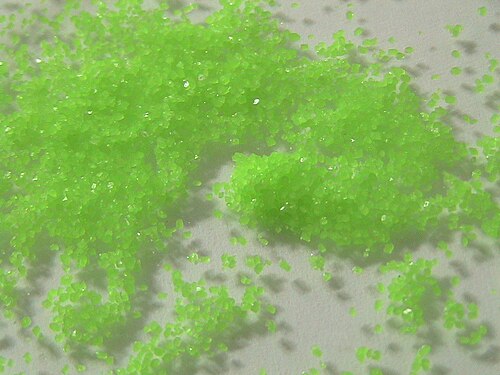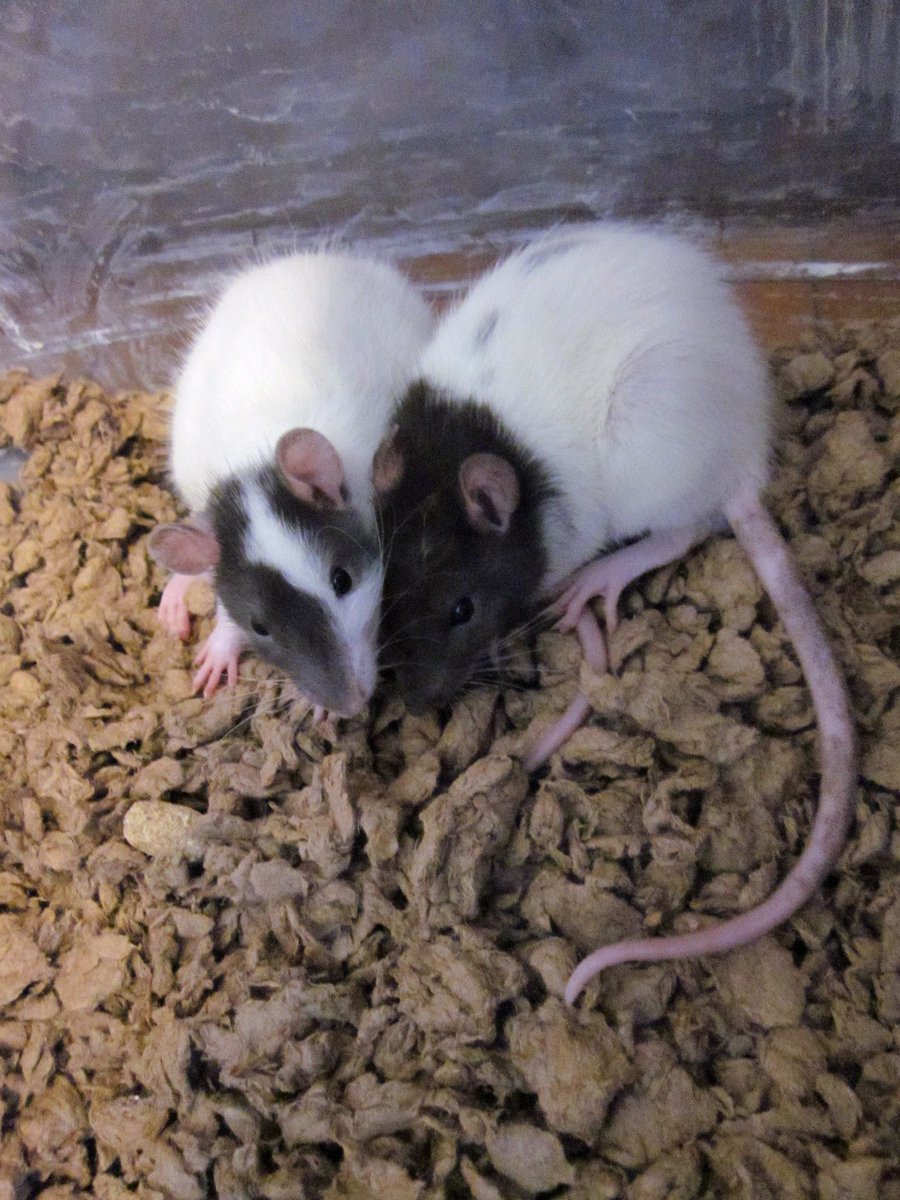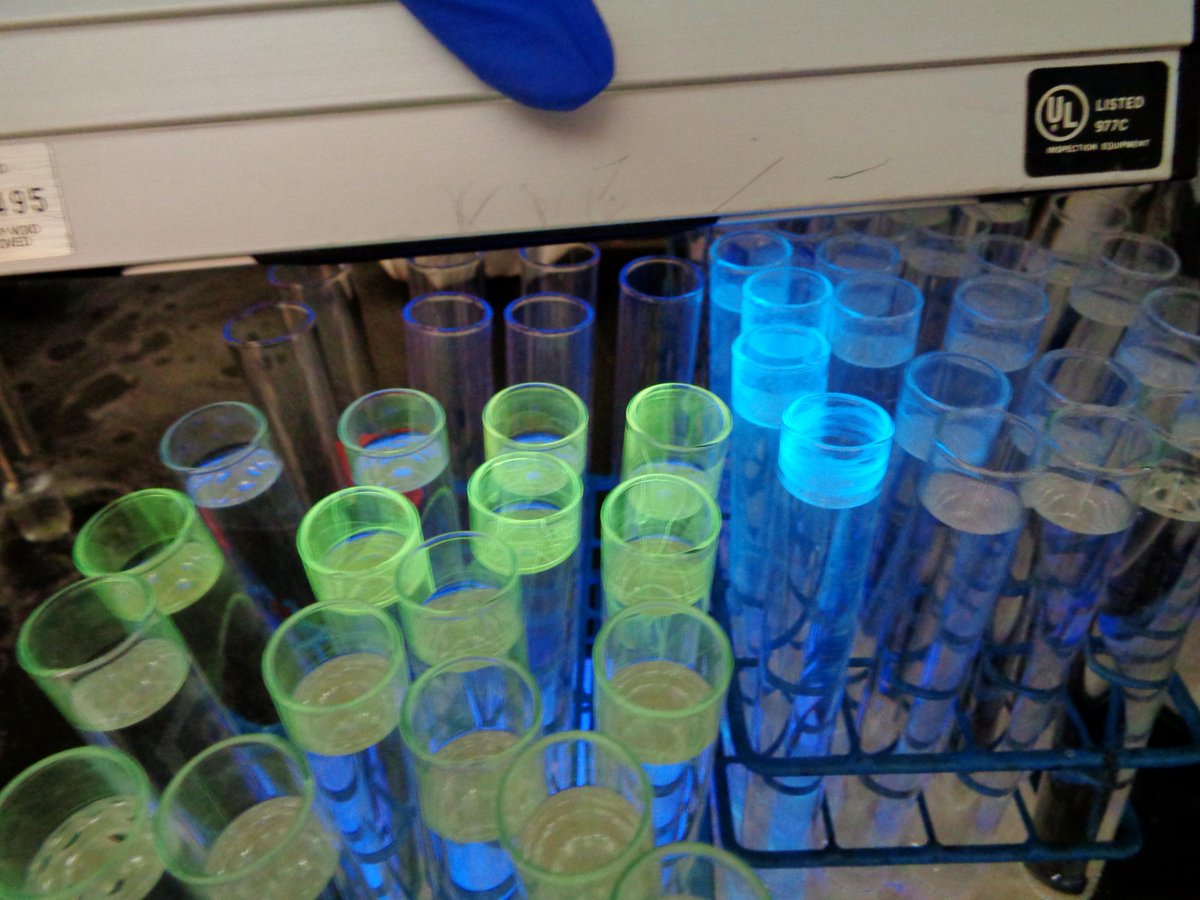Chemistry Things I Think Are Cool

Update: if you don't have a script blocker, this page will no longer load well from 2025 onwards. It's old; I'm not going to fix it. Blame Elon - it is his fault.
There was a meme going around Twitter recently, based on sharing 'cool chemistry' – according to the writer’s own definition. The premise is that for each user who clicks the ‘like’ button on the original post, the writer will share one, sub-140-character snippet about something that is both cool and chemistry-related. It looks something like this:
I've never done one of these before. :D Stolen from @DrRubidium! pic.twitter.com/gpyfMc6hZB
— ⌬Nessa Carson (@SuperScienceGrl) June 14, 2017
As you can see, the meme appears to have been started by the fantastic Dr Raychelle Burks, aka @DrRubidium. Other popular threads were started by @psi_organa and Olefin the Husky.
But here is my contribution. Some of them are frivolous, some of them are complex, all of them are chemistry.
1. Stereospecific migration from organoborates, eg: in hydroboration-oxidation. Yes I'm straight in with the technical stuff
— ⌬Nessa Carson (@SuperScienceGrl) June 14, 2017
3. Hyperfine coupling in EPR. I understand it a lot less now than I did when I was studying for the exam.
— ⌬Nessa Carson (@SuperScienceGrl) June 14, 2017
5. Energetics of cyclohexane conformations. Very cool.
— ⌬Nessa Carson (@SuperScienceGrl) June 14, 2017
I did not completely stick to the rule of omitting context from the commentary:
7. Harrowven's synthesis of colombiasin A.
— ⌬Nessa Carson (@SuperScienceGrl) June 14, 2017
9. Indium too. Actually, everything in Group 13 except Al, which is just a bit fiery.
— ⌬Nessa Carson (@SuperScienceGrl) June 14, 2017
(No offence to aluminium chemists.)
11. Covalently modifying your own silica gel (to make it less polar).
— ⌬Nessa Carson (@SuperScienceGrl) June 14, 2017
Check out p. S-3 of the Supporting Info here for one method of short-chain silica modification.
13. Two words: Conference. Gossip. ❤️
— ⌬Nessa Carson (@SuperScienceGrl) June 14, 2017
I expect this one is due to solvate isomerism:
15. When things turn pink for no explicable reason. Has happened to me a few times. Fascinating even though usually means disaster.
— ⌬Nessa Carson (@SuperScienceGrl) June 14, 2017
17. The ultimate blackness of Pd/C. Like looking into a black hole.
— ⌬Nessa Carson (@SuperScienceGrl) June 14, 2017
19. Mechanical bonds. They're bonds... but not as you know them. It gets a bit philosophical.
— ⌬Nessa Carson (@SuperScienceGrl) June 14, 2017
Yes, I know this is a nickel paper. He’s versatile on transition metals (£):
21. Maitotoxin: a) we know what it is precisely, b) it's SO toxic, c) that huge thing is a NP with consistent stereochem in every molecule
— ⌬Nessa Carson (@SuperScienceGrl) June 14, 2017
23. When I got some acetal instead of all ketone but the mixture red am'd perfectly due to equilibrium 👍🏻
— ⌬Nessa Carson (@SuperScienceGrl) June 14, 2017
25. This 2012 paper from @Sanford_Lab and Ritter, clearing up a controversy https://t.co/rKA2YWQsPz
— ⌬Nessa Carson (@SuperScienceGrl) June 14, 2017
27. The colour of phenolphthalein. Can't get enough.
— ⌬Nessa Carson (@SuperScienceGrl) June 15, 2017
29. Persistent radicals.
— ⌬Nessa Carson (@SuperScienceGrl) June 15, 2017
There are more likes?!
— ⌬Nessa Carson (@SuperScienceGrl) June 15, 2017
31. Soxhlet extraction.
33. Being able to Kugelrohr crude products to purity is VERY cool. When it happens.
— ⌬Nessa Carson (@SuperScienceGrl) June 15, 2017
Just to reiterate from Point 32, Amanda is a genius.
35. Phil @BaranLabReads. 😂
— ⌬Nessa Carson (@SuperScienceGrl) June 15, 2017
37. The fact that this exists. https://t.co/d1jYZ5APL2
— ⌬Nessa Carson (@SuperScienceGrl) June 15, 2017
The link is to What’s Cooking in Chemistry?: How Leading Chemists Succeed in the Kitchen – a series of recipes prepared by well-known chemists.
39. Quadruple bonds... and beyond.
— ⌬Nessa Carson (@SuperScienceGrl) June 15, 2017
41. Incorporation of artificial DNA bases into modified organisms so they don't go rogue
— ⌬Nessa Carson (@SuperScienceGrl) June 15, 2017
43. Just f orbitals, man.
— ⌬Nessa Carson (@SuperScienceGrl) June 15, 2017
45. Cyclodextrins. They are better at catalysis than you are.
— ⌬Nessa Carson (@SuperScienceGrl) June 15, 2017
47. Si stabilizing alpha-anions and beta-cations. #hyperconjugation
— ⌬Nessa Carson (@SuperScienceGrl) June 15, 2017
49. Nit-picking arguments about aromaticity/antiaromaticity
— ⌬Nessa Carson (@SuperScienceGrl) June 15, 2017
Dodecahedrane synthesis is brilliantly summarized by BRSM.
51. Robert Robinson's tropinone synthesis.
— ⌬Nessa Carson (@SuperScienceGrl) June 15, 2017
Movassaghi and coworker’s report on Robinson’s synthesis, 96 years later (£).
53. The entire drug discovery process. It takes so long to go from pre-hit to when everything you've worked for pays off.
— ⌬Nessa Carson (@SuperScienceGrl) June 15, 2017
Andy Brunning has a neat explanation of drug discovery from start to finish.
55. Polychlorosulfolipids.
— ⌬Nessa Carson (@SuperScienceGrl) June 15, 2017
Here’s a Noah Burns total synthesis paper proving that polychlorosulfolipids are, indeed, cool (£).
57. That conformational change that happens in haemoglobin
— ⌬Nessa Carson (@SuperScienceGrl) June 15, 2017
I’m referring to this conformational change.
Yes I will keep this going for as long as you like
— ⌬Nessa Carson (@SuperScienceGrl) June 15, 2017
59. x-ray tubes have a beryllium window. I think that's very cool.
61. Made capillaries full of Me4Si once as an NMR internal standard. Forgot it was flammable when flame-sealing; like a tiny flare! 🎇
— ⌬Nessa Carson (@SuperScienceGrl) June 15, 2017
63. We still can't add RLi to most ketones enantioselectively, very well. Would be neat to work on that.
— ⌬Nessa Carson (@SuperScienceGrl) June 15, 2017
Here’s a great paper from the Nakajima group of lithium acetylide addition to ketones and aldehydes in up to 98.5:1.5 er (£).
65. Flame tests. Since high school I have only done them to identify vague bits of spilt powder for no particular reason
— ⌬Nessa Carson (@SuperScienceGrl) June 15, 2017
67. The Meselson-Stahl experiment where they figured out semi-conservative DNA replication with 14N labelling and centrifuge separation
— ⌬Nessa Carson (@SuperScienceGrl) June 16, 2017
As John Campbell pointed out, that is a typo for 15N labelling – 14N wouldn’t be much use!
69. Crystal structures of biological receptors. We'd be poor indeed without them.
— ⌬Nessa Carson (@SuperScienceGrl) June 18, 2017
71. Theory of optimizing logical disconnection for retrosynthesis (Richmond Sarpong and EJ Corey)
— ⌬Nessa Carson (@SuperScienceGrl) June 18, 2017
73. Relatedly but not identically, molecular symmetry.
— ⌬Nessa Carson (@SuperScienceGrl) June 18, 2017
75. IR spectroscopy. It's a world of underrated. Once showed me my product was not at all of the nature I thought it was.
— ⌬Nessa Carson (@SuperScienceGrl) June 18, 2017
77. 18F incorporation strategies. (Oh hello @Sanford_Lab again - see this feature article by Sanford & Scott https://t.co/a192ahDsOf)
— ⌬Nessa Carson (@SuperScienceGrl) June 18, 2017
18F is important as a positron source for PET scanning. It requires special modes of synthesis due to its short half life of 110 minutes.
79. Praseodymium(III) nitrate. It's very hard to believe the colour comes from a pure salt and there isn't some kind of organic dye added.
— ⌬Nessa Carson (@SuperScienceGrl) June 18, 2017
This is actually the sulfate, but it’s visually similar:

81. α-Aminonitriles. They're so much more than amino acid precursors after a Strecker. Handy acyl anion equivalents: https://t.co/S8zv8Mfgfy
— ⌬Nessa Carson (@SuperScienceGrl) June 18, 2017
83. The invention of imatinib (Gleevec), the first selective tyrosine kinase inhibitor.
— ⌬Nessa Carson (@SuperScienceGrl) June 18, 2017
85. Photochemical activation of enamines (so basically, ketones) at a site you couldn't easily functionalize classically (@MacMillan_Lab)
— ⌬Nessa Carson (@SuperScienceGrl) June 19, 2017
With apologies to Nicki Minaj.
87. QSAR for biological response to small molecules: quantifying effects, presence of trends, and prediction are ALL cool.
— ⌬Nessa Carson (@SuperScienceGrl) June 19, 2017
89. Magnesium burning in nitrogen. Or CO2.
— ⌬Nessa Carson (@SuperScienceGrl) June 19, 2017
91. Tunable dye lasers. (Pew, pew!)
— ⌬Nessa Carson (@SuperScienceGrl) June 19, 2017
93. High-T superconductors.
— ⌬Nessa Carson (@SuperScienceGrl) June 20, 2017
Betaine with his brother Ylid:

95. Made nickel boride (in situ) for 2nd time today. It's a versatile reductant. Soon as you add the NaBH4, mixture becomes sickening black
— ⌬Nessa Carson (@SuperScienceGrl) June 20, 2017
As always, e-EROS has a useful summary of nickel boride’s use as a reagent (£). Wikipedia offers a non-subscription alternative.
97. The electrolysis exhibit at @CatalystSDC. When I electrolysed H2O for the first time as a little kid that blew me away!
— ⌬Nessa Carson (@SuperScienceGrl) June 20, 2017
99. Columns where you can hold a UV lamp up to the silica to see where your cpd is. Here's the result of one of mine https://t.co/Alz9Viy42V
— ⌬Nessa Carson (@SuperScienceGrl) June 20, 2017

101. Blowing across dry ice to create mysterious smoke, or dropping it into water. You all do it too.
— ⌬Nessa Carson (@SuperScienceGrl) June 20, 2017
103. When crystallization happens so fast you can watch the crystals grow before your eyes.
— ⌬Nessa Carson (@SuperScienceGrl) June 20, 2017
105. Stick an acetyl group on salicylic acid & it reduces side-effects. Stick acetyl groups on morphine & it goes crazy!
— ⌬Nessa Carson (@SuperScienceGrl) June 20, 2017
107. Formulations in cosmetic chemistry and their constant striving for improvement (or that's what the marketers tell the public)
— ⌬Nessa Carson (@SuperScienceGrl) June 20, 2017
109. Lab coats are pretty hot. They're kind of a big deal.
— ⌬Nessa Carson (@SuperScienceGrl) June 20, 2017
111. They gave out photochromic polymers at Leeds @salters_inst chemistry camp when I was a kid. Still got mine. Turns bright pink in sun
— ⌬Nessa Carson (@SuperScienceGrl) June 22, 2017
There were a lot more likes than I expected! Hope you learned something from the list. I found it instructive to write!